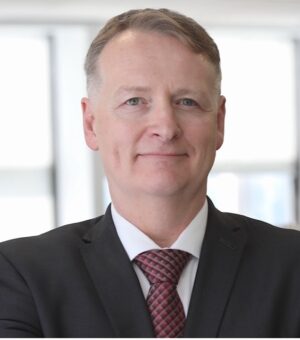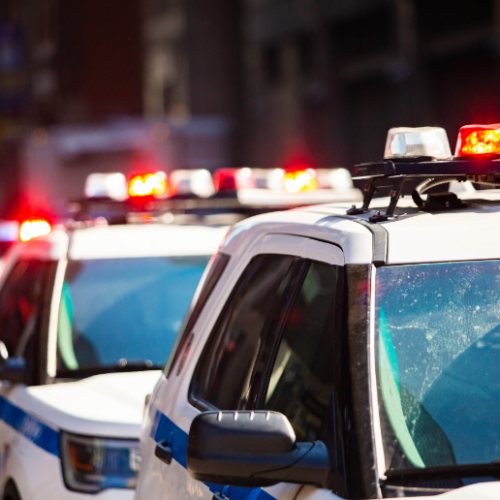Understanding Overdose Risk for People Reentering the Community
An Informational Guide for Families
Reentry, in general, can be a challenging time for people as they are preparing to transition back into the community. For people with a substance use disorder, reentry is even more challenging because of the potential to relapse and experience overdose. Studies show that family support can improve outcomes for a person in treatment, however, and is a significant factor in predicting long-term recovery. This guide outlines ways to support a family member or loved one and evidence-based strategies for achieving recovery, including tips for families who want to support these efforts.
Understanding Overdose Risk for People Reentering the Community
An Informational Guide for Families

Reentry, in general, can be a challenging time for people as they are preparing to transition back into the community.
For people with a substance use disorder, reentry is even more challenging because of the potential to relapse and experience overdose.
This is often caused by a decreased tolerance for substances after no longer having access during incarceration. Indeed, people in reentry are at highest risk of an overdose or even death during the first 48 hours of reentry, and that risk continues 2 weeks following release into the community.1 This risk is highest among people using opioids.
While it can be daunting to ensure that, among all other preparations for the reentry of a family member with a substance use disorder, they also do not overdose, families can play an important role in preventing overdose. Studies show that family support can improve outcomes for a person in treatment and is a significant factor in predicting long-term recovery.2
To best support people in recovery as they are preparing for reentry, family members must first understand the nature of substance use disorders and be fully involved in the treatment and recovery process.
This guide outlines ways to support a family member (family is used here in a broad sense for the self-identified support system) or loved one and evidence-based strategies for achieving recovery, including tips for families who want to support these efforts.

Families can best support their loved ones by educating themselves about the disease of addiction and the evidence-based treatments, including medications, that can support their recovery. They can also make sure that family members have access to care for their substance use disorder throughout the reentry process.
Supporting Your Family Member
Recovery is a process that requires patience, empathy, and understanding of the disease that confronts a loved one. And there is no better advocate for a person with a substance use disorder than a knowledgeable, empathetic family member who can help ensure that the person in recovery gets access to the evidence-based treatments and support services that will give them the best chance to succeed. In fact, according to the U.S. Department of Health and Human Services’ Substance Abuse and Mental Health Services Administration, engaged family members “can positively affect substance use disorder treatment engagement and retention.”3
When a person experiences a setback in their treatment for diabetes or heart disease, it’s not called a failure. Likewise, when people with substance use disorders experience a relapse, it should not be thought of as failure. People achieve long-term recovery in varied ways with some going to treatment and others relapsing several times before they achieve recovery.4
There are many different types of meetings available to help people achieve recovery, including:
988 Suicide and Crisis Lifeline: 988lifeline.org
Alcoholics Anonymous: www.aa.org
Celebrate Recovery: www.celebraterecovery.com
Cocaine Anonymous: ca.org
Dual Recovery Anonymous: draonline.org
Heroin Anonymous: heroinanonymous.org/meetings
Lifering Recovery: lifering.org
Marijuana Anonymous: marijuana-anonymous.org
Medication Assisted Recovery Anonymous: www.mara-international.org
Narcotics Anonymous: na.org
Opiates Anonymous: opaworldservices.com
Refuge Recovery: www.refugerecovery.org
Secular Organizations for Sobriety: www.sossobriety.org
SMART Recovery: meetings.martrecovery.org/meetings
Wellbriety: wellbrietymovement.com
Women for Sobriety: womenforsobriety.org

The Benefit of Positive Social Connections
Building positive relationships with peers, family members, and others also in recovery who abstain from alcohol and drug use helps patients avoid negative outcomes. Research shows that people tend to internalize the norms and values of the social groups that they belong to, and that by transitioning from groups that support substance use to groups that support recovery, the likelihood that a person will achieve stable recovery improves.5 Family members have the unique ability to help a person in reentry by encouraging or helping them create positive social connections as they transition back to the community.
Tips for family members:
■ Check in on your family member regularly, particularly within the first few days that they reenter the community up through the first two weeks. This time period tends to have the higest risk for overdose and relapse.
■ Help your family member think through social activities that provide meaning for them and a way to meet new people and develop additional social support.
■ Make sure your family member follows through on their reentry plan by going to treatment and participating in the recovery support services that they identified prior to reentering the community.
■ Go “meeting shopping” with your family member to help find a meeting that feels right to them, if that is a support they desire.
Key items for a daily routine can include:
- Sleep schedule that incorporates at least 7 hours of sleep a night6
- Healthy diet
- Daily exercise
- Regular work or school schedule
- Participation in treatment and recovery support, whether through group meetings, going to recovery centers, after care, or counseling
- Pursuit of creative and/or volunteering opportunities
Self-Care and Establishing a Daily Routine
Self-care and a strong daily routine are important tools for people in recovery, because they help to counteract anxieties and triggers that can come with unstructured time, boredom, and isolation. They can also help people fill their time with positive interactions when they might have previously been using that time to reinforce their addiction. Family members can encourage and help their loved ones identify the components of a daily routine by having conversations about what they would like to accomplish on a daily basis and setting goals in partnership with their treatment or recovery support providers. Family members can also help loved ones by joining them for various social activities, modeling a self-care routine of their own, and encouraging them to find meaning in different creative pursuits or through volunteering opportunities.
Tips for family members:
■ Encourage your family member to develop a daily health routine.
■ Be loving, patient, and non judgmental while engaging with your family member.
■ Practice your own self-care to ensure you do not “burn out” while supporting your family member and to exhibit positive habits.
Evidence-Based Strategies to Support Recovery for People with Opioid Use Disorders
As of 2020, 19 percent of people incarcerated in prisons and jails reported that they had regularly used opioids and more than half met the criteria for having a substance use disorder.7 Given that people are at a high risk of an overdose during their transition to the community,8 and approximately 1.6 million people were incarcerated in state prisons and jails across the U.S. in 2020,9 it has become increasingly critical for people in reentry and their family members to ask for evidence-based strategies that can reduce a person’s chances of overdose.
The following evidence-based strategies have been proven to support a person’s recovery from opioid use disorder and reduce their overdose risk as they transition back into the community.
Supporting Access to Medications that Treat Opioid Use Disorders
According to the Center for Disease Control and Prevention (CDC), the provisional counts of overdose deaths in the United States surpassed 106,000 people in July 2023, which is an increase of over 2 percent from the previous year.10 Therefore, while there are many other substances people can be addicted to, such as alcohol, the risk of overdose death from opioids remains incredibly high. Advancements have been made to support people with substance use disorders, including the use of three U.S. Food and Drug Administration (FDA)-approved medications to treat alcohol and opioid use disorder: methadone, buprenorphine, and naltrexone. While they each work differently, they have all been proven to help stabilize brain chemistry, reduce or block the euphoric effects of opioids (i.e., the “high”), and relieve cravings so that the patient can engage in other aspects of treatment such as counseling. Unfortunately, there is often stigma associated with the use of medications to treat addiction; however, with other chronic diseases like diabetes, people expect to have broad availability of medications at a reasonable cost. This should also be the expectation for addiction medicine.
Research shows that providing medications to people in the justice system who have an opioid use disorder prior to and during reentry cuts the risk of death by 75 percent.11 Studies also show that it is most beneficial to provide these medications early and continuously after release from prison or jail, beginning with screening, assessment, and medical examination in correctional facilities.12 Indeed, the risk of death for people released from prison with an opioid use disorder is lowest for those who have been using one of the FDA-approved medications since entering prison or jail and continue it upon release. This is largely because the medication can be used to support continued withdrawal management, which can include symptoms such as headaches, agitation, high blood pressure, depression, and other medical dangers if not treated.13
Resources for family members
If you are looking for programs that provide medications for opioid use disorders, the following national locators can serve as a guide for when you ask about treatment.
Opioid Treatment Program Directory
dpt2.samhsa.gov/treatment/directory.aspx
This website provides a list of opioid treatment programs (i.e., clinics that dispense medications for opioid use disorder) in each state.
Buprenorphine Treatment Practitioner Locator
www.samhsa.gov/medication-assisted-treatment/find-treatment/treatment-practitioner-locator
This website provides a list of practitioners who can provide buprenorphine in each state.
Tips for family members:
■ Ask prison or jail staff about treatment options available in the correctional facility and in the community. While someone is in a correctional facility, the family member can ask if medication for opioid use disorders are available. For community-based treatment, probation and parole officers can also assist with suggestions and referrals to treatment programs. If options exist, work with them to get your family member connected to treatment.
■ Remind your family member to take all prescribed medications including those for addiction and mental health needs by focusing on how the medication(s) can support their recovery.
■ Ask if your family member would like you to attend meetings to help develop the reentry case plan that will guide their treatment or their treatment appointments. Ideally, this would happen while the person is in the correctionaly facililty as part of a reentry case plan process. Visit projects.csgjusticecenter.org/collaborative-comprehensive-case-plans/ for more information.
■ Stay engaged with their treatment team and serve as a resource for your family member to help support their treatment and recovery journey.
■ Each person may need something different; it is important to have the conversation about what would be most helpful for your loved one, which is why learning more about their reentry case plan can be useful in identifying ways to support them.
Learn How to Access and Use Naloxone
The distribution of naloxone, an FDA-approved temporary antidote to an opioid overdose, has become a useful strategy in reentry planning as people are leaving or preparing to leave correctional facilities. One of the reasons why this stratey is being used by jails and prisons is because it is not only safe, quick acting, effective, and non-addictive, but studies have consistently shown that the distribution of naloxone reduces overdose deaths.14
Family members can access naloxone through a pharmacy, naloxone vending machines that may be available in the community, or harm reduction programs. In some cases, correctional facililties may also distribute naloxone to people reentering the community and their family members.
Resources for family members
Naloxone Facts is an awareness campaign from the Addiction Policy Forum that includes short videos explaining how to respond to an overdose, including how to use naloxone. Visit www.addictionpolicy.org/post/naloxone-awareness for more information.
First Aid for Opioid Overdoses, from American Red Cross Training Services, offers online trainings about how to respond to an overdose. Visit www.redcross.org/ take-a-class/opioidoverdose for more information.
GetNaloxoneNow offers local resources, trainings, and information on how to access naloxone. Visit www.getnaloxonenow.org/ for more information.
Tips for family members:
■ Learn how to respond to an overdose through online resources, training, or by connecting with a harm reduction service provider in your community. Visit harmreduction.org/issues/overdose-prevention/overview/overdose-basics/ responding-to-opioid-overdose/ for more information.
■ Learn about safe ways to use naloxone and keep it on hand in case of emergencies. Visit harmreduction.org/issues/overdose-prevention/overview/overdose-basics/ understanding-naloxone/ for more information.
For more information on how to support and advocate for additional evidence-based strategies in recovery, including the development of relapse prevention plans, the assessment of a person’s recovery capital, and referrals to recovery centers, visit the companion guide.

Endnotes
1. In a Washington state study, researchers found that within the first two weeks, individuals released from prison were 129 times more likely to die than state residents. The majority of deaths during this initial two-week period were attributed to drug overdose, especially heroin overdose. See Dr. Shabbar Ranapurwala et al., “Opioid Overdose Mortality Among Former North Carolina Inmates: 2000–2015,” American Journal of Public Health 108 (9), 1207–1213, doi.org/10.2105/ajph.2018.304514.
2. S. Brown et al., “Personal Network Recovery Enablers and Relapse Risks for Women with Substance Dependence,” Qualitative Health Research 25, no. 3 (2015): 371–385; A. A. Cavaiola, B. A. Fulmer, and D. Stout, “The Impact of Social Support and Attachment Style on Quality of Life and Readiness to Change in a Sample of Individuals Receiving Medication-Assisted Treatment for Opioid Dependence,” Substance Abuse 36, no. 2 (2015): 183–191; R. H. Moos and B. S. Moos, “Protective Resources and Long-Term Recovery from Alcohol Use Disorders,” Drug and Alcohol Dependence 86 no. 1 (2007): 46–54.
3. SAMHSA, Treatment Improvement Protocol (TIP) 39: Substance Use Disorder Treatment and Family Therapy (Updated 2020) (Rockville, MD: SAMHSA, 2012), store.samhsa.gov/sites/default/files/SAMHSA_Digital_Download/PEP20-02-02-012-508%20PDF.pdf.
4. J. F Kelly et al., “How Many Recovery Attempts Does It Take to Successfully Resolve an Alcohol or Drug Problem? Estimates and Correlates from a National Study of Recovering U.S. Adults,” Alcoholism: Clinical and Experimental Research 43, no. 7 (2019): 1533–1544. doi: 10.1111/acer.14067.
5. D. Best, A Model for Resettlement Based on the Principles of Desistance and Recovery (Manchester, UK: HM Inspectorate of Probation, 2019), www.justiceinspectorates.gov.uk/hmiprobation/wp-content/uploads/sites/5/2019/06/Academic-Insights-Best.pdf
6. “Healthy Lifestyle: Adult Health,” Mayo Foundation for Medical Education and Research, accessed August 17, 2023, www.mayoclinic.org/healthy-lifestyle/adult-health/expert-answers/how-many-hours-of-sleep-are-enough/faq-20057898.
7. Dr. Shabbar Ranapurwala et al., “Opioid Overdose Mortality Among Former North Carolina Inmates: 2000–2015,” American Journal of Public Health 108, no. 9 (2018): 1207–1213, doi.org/10.2105/ajph.2018.304514.
8. Ibid.
9. “Total Correctional Population,” U.S. Department of Justice’s Office of Justice Programs’ Bureau of Justice Statistics Bulletin, accessed January 24, 2023, bjs.ojp.gov/data/key-statistics; I.A. Binswanger et al., “Release from Prison—A High Risk of Death for Former Inmates,” The New England Journal of Medicine 356 (2007): 157–165, doi: 10.1056/NEJMsa06411; National Academies of Sciences, Engineering, and Medicine, Medications for Opioid Use Disorder Save Lives (Washington, DC: The National Academies Press, 2019), doi.org/10.17226/25310.
10. “National Vital Statistics System Provisional Drug, Overdose Death Counts,” CDC, accessed December 18, 2023, www.cdc.gov/nchs/nvss/vsrr/drug-overdose-data.htm.
11. L. Degenhardt et al., “The Impact of Opioid Substitution Therapy on Mortality Post-Release from Prison: Retrospective Data Linkage Study,” Addiction 109, no. 8 (2014): 1306-17, doi: 10.1111/add.12536
12. National Academies of Sciences, Engineering, and Medicine, Medications for Opioid Use Disorder Save Lives (Washington, DC: The National Academies Press, 2019), doi.org/10.17226/25310.
13. Meeting between the CSG Justice Center and Dr. Kelly Clark, February 2, 2018.
14. L.D. Wenger et al., A Primer for Implementation of Overdose Education and Naloxone Distribution in Jails and Prisons (North Carolina: RTI International, 2019), https://harmreduction.org/wp-content/uploads/2020/09/A-primer-for-implementation-of-OEND-in-jails-and-prisons-Wenger-2019-RTI.pdf; National Academies of Sciences, Engineering, and Medicine, Medications for Opioid Use Disorder Save Lives (Washington, DC: The National Academies Press, 2019), doi.org/10.17226/25310.

This project was supported by Grant No. 2020-CZ-BX-K001 awarded by the Bureau of Justice Assistance. The Bureau of Justice Assistance is a component of the Department of Justice’s Office of Justice Programs, which also includes the Bureau of Justice Statistics, the National Institute of Justice, the Office of Juvenile Justice and Delinquency Prevention, the Office for Victims of Crime, and the SMART Office. Points of view or opinions in this document are those of the author and do not necessarily represent the official position or policies of the U.S. Department of Justice.
Project Credits
Writing: Shawn Rogers, formerly of Addiction Policy Forum, and Sarah Wurzburg, CSG Justice Center
Research: Shawn Rogers, formerly of Addiction Policy Forum, Braeden Kelly, Addiction Policy Forum, and Sarah Wurzburg, CSG Justice Center
Advising: Jessica Hulsey, Addiction Policy Forum
Editing: Darby Baham, CSG Justice Center
Design: Michael Bierman
Web Development: Yewande Ojo, CSG Justice Center
Public Affairs: Jen Wilburne, CSG Justice Center
About the Authors


Almost half of all violent crime in Kentucky is rooted in domestic violence (DV), and nearly 40 percent…
Read More Key Findings and Recommendations from Kentucky’s Justice Reinvestment Initiative to Better Understand and Address Domestic Violence
Key Findings and Recommendations from Kentucky’s Justice Reinvestment Initiative to Better Understand and Address Domestic Violence
Almost half of all violent crime in Kentucky is rooted in domestic…
Read More Explainer: Key Findings and Options from Arkansas’s Justice Reinvestment Initiative
Explainer: Key Findings and Options from Arkansas’s Justice Reinvestment Initiative
Arkansas policymakers have long expressed concerns about the state’s high recidivism rate.…
Read More State of the States: Criminal Justice and Behavioral Health Priorities in 2025
State of the States: Criminal Justice and Behavioral Health Priorities in 2025
Governors emphasized a wide range of criminal justice and behavioral health initiatives…
Read More Apply Now for Resident Analyst Program to Increase Data Analysis Capacity at Departments of Corrections
Apply Now for Resident Analyst Program to Increase Data Analysis Capacity at Departments of Corrections
Corrections leaders balance the complex priorities of maintaining public safety, operating secure…
Read More















